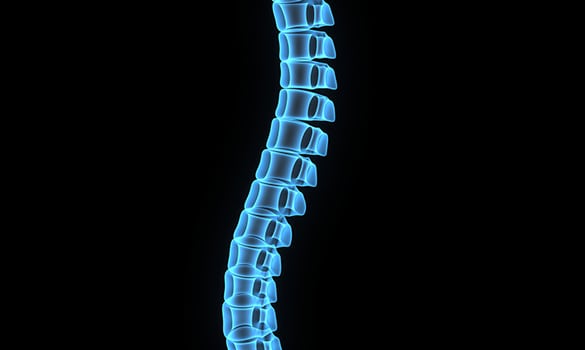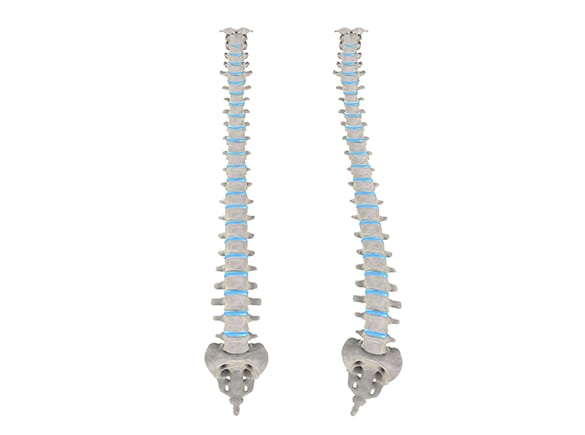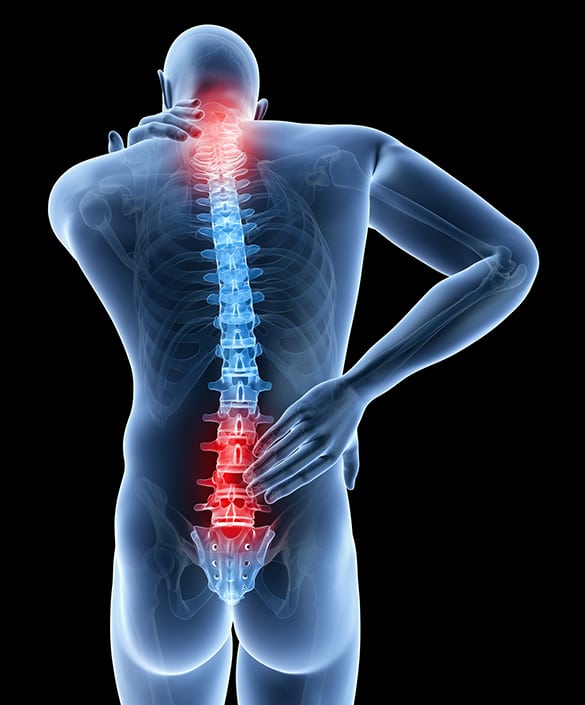
Find relief from Spinal Stenosis with the help of Los Angeles Pain Associates.
Spinal stenosis occurs when the canal formed by the vertebrae starts to narrow. The canal is meant to protect the spinal cord, but when it narrows to the point that it impinges on the spinal cord and the surrounding nerves, it can cause pain and a variety of other symptoms.
- Spinal stenosis is classified according to the portion of the spine that is affected
- The most common types are cervical stenosis, which involves the vertebrae in the neck, and lumbar stenosis involving the lower back
CONTACT US TODAY
Causes of Spinal Stenosis
While some people are born with an abnormally small spinal canal, the most common cause of spinal stenosis is osteoarthritis caused by wear and tear and age-related degeneration. Over time, the cartilage that serves as a cushion between the vertebrae starts to break down, the ligaments of the spine thicken, and the growth of bone tissue can lead to bone spurs. These changes can put excess pressure on the spinal cord and nerves. Other common causes of spinal stenosis include:
• Traumatic injury resulting in inflammation of the spine
• Herniated discs
• Tumors that impinge on the spinal cord
• A condition called Paget’s disease in which the bones become abnormally large and brittle
Those most at risk for developing spinal stenosis are adults over the age of 50, individuals with congenital deformities of the spine, and those who engage in sports or occupations that put stress on the spine.


Symptoms of Spinal Stenosis
The symptoms of spinal stenosis vary based on which nerves and portion of the spine are affected. Stenosis of the cervical spine may cause neck pain, balance problems, and weakness or numbness in the upper or lower extremities. In extreme cases, it may also cause bowel or bladder incontinence. Lumbar stenosis typically causes lower back pain, cramping or pain in the legs when standing or walking for long periods, and weakness or numbness in the lower extremities.
Diagnosing Spinal Stenosis
Spinal stenosis is normally diagnosed using imaging tests, including:
- X-rays
- MRIs
- CT scans
Treatments for Spinal Stenosis
The treatment of spinal stenosis is determined by its location and the severity of the patient’s symptoms. Conservative measures include over-the-counter and prescription pain relievers, antidepressants, and anti-seizure medications that can help calm inflamed nerves. Physical therapy can help build muscle strength, which can improve balance and spinal stability and flexibility. Steroids may provide temporary relief from pain by reducing inflammation. If the stenosis is caused by a thickened ligament, a lumbar decompression procedure can be used to remove the portion of the ligament that is causing the impingement. If less invasive measures are unsuccessful, surgery, such as a laminectomy, laminotomy, or laminoplasty, may be required to enlarge the spinal canal.

